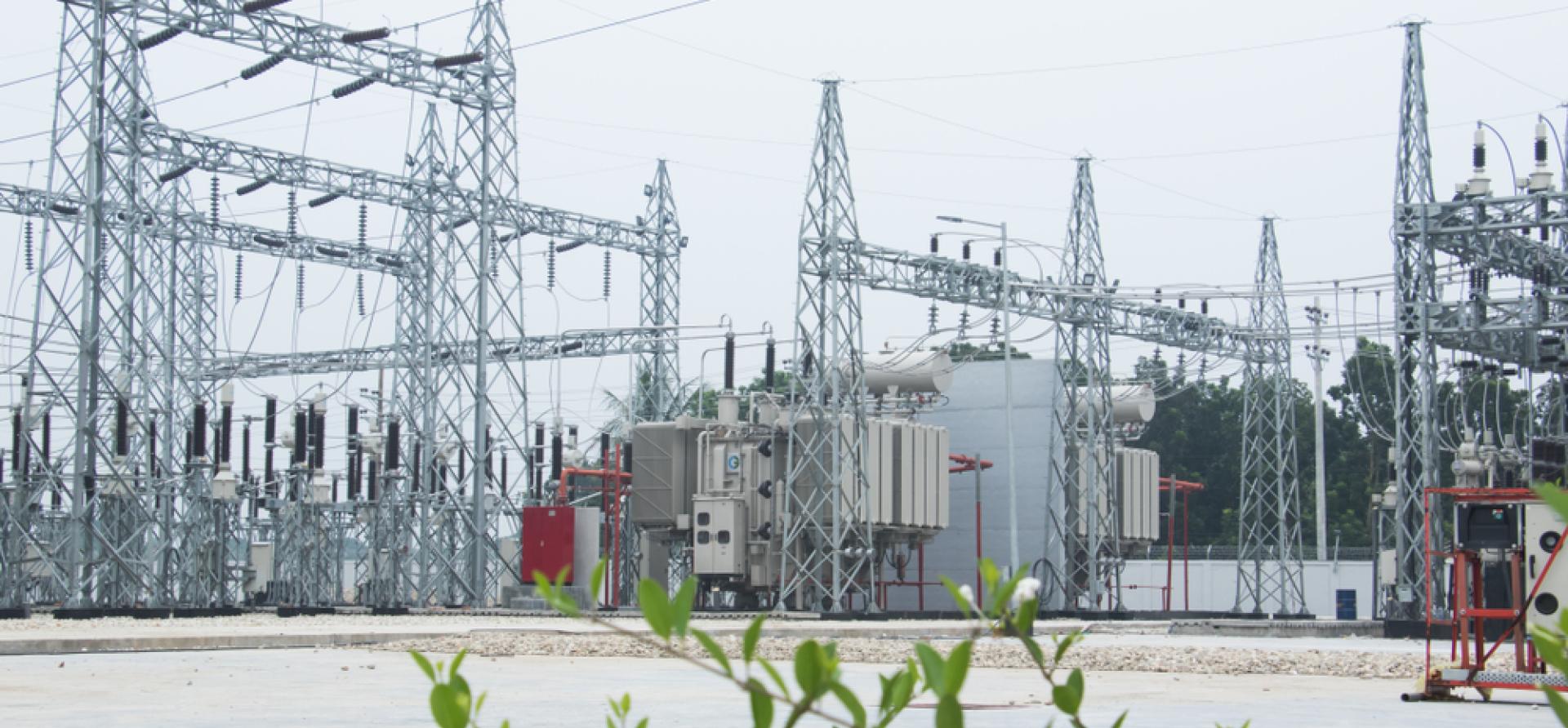How to make Bangladesh’s power sector sustainable

Key Findings
Sluggish demand growth, high capacity payments and expensive fuels have created financial havoc and a toxic subsidy burden for the Bangladesh Power Development Board (BPDB). From FY2020-21 to FY2022-23, the BPDB registered a cumulative loss of Tk148.69 billion (US$1.27 billion) even after receiving a hefty subsidy of Tk809.7 billion (US$6.88 billion).
With baseload power plants of more than 5,000MW coming online soon and increased interest in renewable energy projects, the power system’s capacity will likely cross 35,000MW in 2030. This capacity will be more than enough to meet the country’s power demand in 2030. Therefore, Bangladesh can stop adding fossil fuel-based power capacity beyond under-construction projects.
The existing renewable energy tariff in Bangladesh is half the cost of electricity generated by oil-fired power plants. Solar power for daytime peak application and evening peak use, supported by two- to three-hour battery backups, will allow the BPDB to significantly lower the power generation cost and minimise capacity payments.
The government must consider investing in grid modernisation to improve the reliability of grid electricity and encourage industries to shift to grid electricity. Without this investment, surplus power generation capacity will likely shoot up, leading to additional capacity payments.
The power sector of Bangladesh is in the grip of an aggressive, fossil-fuel-based capacity expansion trend. The situation highlights several challenges, such as power system overcapacity, capacity payments, revenue shortfalls and subsidy burden. However, a suitable action plan will help steer the power sector towards sustainability.
Challenges of the power sector
An unrealistic power demand projection, despite disruptions by COVID-19 and Russia’s invasion of Ukraine, has aggravated the system overcapacity, throwing the future sustainability of the power sector into question. The sector now grapples with high generation costs, revenue shortfall and subsidy burden.
1. Overcapacity and capacity payments
The installed power generation capacity of Bangladesh is 28,166 megawatts (MW) against the maximum demand of 17,200MW, recorded by the Bangladesh Power Development Board (BPDB) in 2024. This shows that the power sector has a surplus generation capacity of 38.9%. The surplus capacity rises to even more than 60% during winter. Although a high reserve margin is necessary with a sizeable share of variable renewable energy in the power system, this is not the case for Bangladesh. The country has a combined solar and wind capacity of 663MW (2.35% of the installed capacity of 28,166MW) connected to the grid, substantiating that the system is heavily dominated by fossil fuel-based plants. More than 40% of these plants are privately owned, and 9% are joint ventures between Bangladesh and other countries. Even when there is not enough demand, the BPDB must make large capacity payments to these fossil fuel plants.
2. High generation costs
Without ample renewable energy plants, Bangladesh heavily utilises expensive oil-fired peaking power plants. IEEFA’s analysis shows that the average power generation cost from oil-fired plants was about 23 Bangladeshi Taka (Tk per kilowatt-hour (kWh) (US20¢/kWh) against the average generation cost of Tk11.33/kWh (US9.6¢/kWh) in the fiscal year (FY) 2022-23. Oil-fired power plants significantly increased average power generation costs in FY2022-23 as they were responsible for more than half of the total cost against the generation of about 24%.
3. Revenue shortfall and subsidy burden
Sluggish demand growth, high capacity payments and the use of expensive fuels have created financial havoc and a toxic subsidy burden for the BPDB. From FY2020-21 to FY2022-23, the BPDB registered a cumulative loss of Tk148.69 billion (US$1.27 billion) even after receiving a hefty subsidy of Tk809.7 billion (US$6.88 billion). Moreover, the BPDB’s payment backlog against energy purchased from gas companies and private power producers has soared to Tk450 billion (US$4 billion).
Unless Bangladesh charts a roadmap to revamp the existing power system expansion plan and integrate future projects, the BPDB will find the sector completely unmanageable.
Time for a reality check
A 7% annual growth in power demand will lead to a maximum peak demand of 25,813MW in 2030. With baseload power plants of more than 5,000MW, including nuclear, coming online soon and increased interest in renewable energy projects, the power system’s capacity will likely cross 35,000MW in 2030. This capacity will be more than enough to meet the country’s power demand in 2030. Therefore, Bangladesh can stop adding fossil fuel-based power capacity beyond projects under construction, allowing the BPDB to reduce capacity payments. Demand-side energy efficiency will help contain the soaring power demand.
The existing renewable energy tariff in Bangladesh is half the cost of electricity generated by oil-fired power plants. Solar power for daytime peak application and even evening peak use, supported by two- to three-hour battery backups, will allow the BPDB to lower the power generation cost significantly and minimise capacity payments. Notably, renewable energy project developers are not entitled to capacity charges.
Power demand in the industry sector shows a much sluggish growth trend compared with households. In the absence of a reliable grid electricity, most industries use captive generators. If industries have more reliable grid electricity, surplus power capacity will decrease. As industries pay high tariffs, the BPDB’s revenue shortfall will also reduce.
Action plan for the power sector’s sustainability
To make the power sector sustainable, Bangladesh must chart a plan to address the challenges. The action plan below may lay the foundation for the sustainability of the power sector, by:
- Not commissioning any new fossil-fuel-based power plants until 2030 to optimise existing system capacity.
- Expediting the demand-side energy efficiency to reduce wastage and minimise rising power demand.
- Benchmarking the cost of projects, be they generation or transmission. This is because energy and power sector project implementation is expensive in Bangladesh. Reducing upfront investment will also help minimise capacity payments. As the interim government has suspended activities under the Quick Enhancement of Electricity and Energy Supply Act, which used to allow projects without competition, the country will now have the scope to enhance competition and scrutinise costs.
- Investing in grid modernisation to improve the reliability of grid electricity and encourage industries to shift to grid electricity. Without this investment, surplus power generation capacity will likely shoot up, leading to additional capacity payments.
- Designing a well-thought-out plan to maximise the use of economic power plants to rein in rising power generation costs.
- Accelerating the deployment of renewable energy to slash the costly electricity purchase from oil-fired power plants.
- Resource mapping to earmark suitable areas for renewable energy projects, and empowering BPDB to implement renewable energy projects on suitable government lands. Well-designed renewable energy projects will help the BPDB reduce the cost drastically.
- Enhancing the capacity of renewable energy sector stakeholders to implement high quality projects and encouraging industries and commercial buildings to uptake financially lucrative rooftop solar project.
- Creating a favourable ecosystem to help spur renewable energy in the country. The Sustainable and Renewable Energy Development Authority (SREDA), as the agency to support the clean energy deployment in Bangladesh, may instill the necessary leadership. SREDA may further analyse the comparative advantage of rationalising import duties applicable for renewable energy projects considering its potential contribution to cutting down fossil fuel imports over the next 20 years.
Bangladesh’s power sector shows where the gaps are and what are the key areas to focus on. The onus is on the government to implement a suitable, long-term action plan consistently to improve on key areas to make the power sector sustainable.
This article was first published in The Business Standard.















